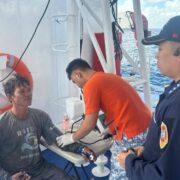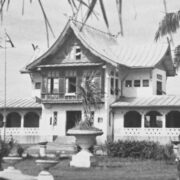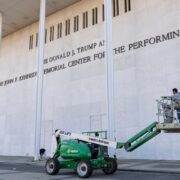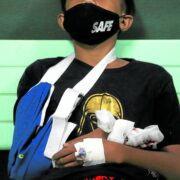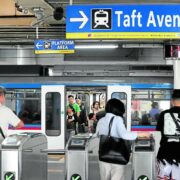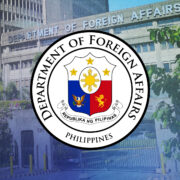Beyond the dolomite beach

The Metro Manila Development Authority (MMDA) has blamed the controversial dolomite beach project built during the Duterte administration for causing massive floods in the metropolis.
The Department of Environment and Natural Resources (DENR), however, pointed out that any assessment on Metro Manila’s flooding problems should be “rooted in science-based analysis, particularly in light of changing weather patterns influenced by climate change.”
DENR cited data from the Philippine Atmospheric, Geophysical and Astronomical Services Administration showing an increase in rainfall over the past decade, which it said has overwhelmed drainage systems in urban areas such as Metro Manila.
That these government agencies spend more time pointing fingers and trading barbs instead of collaborating to find solutions to the decades-old problem of flooding is an utter display of poor governance.
The change in weather patterns that bring about heavy floods can indeed be attributed to climate change. However, while the record amount of rainfall exacerbates the flooding, there are other factors at play.
Contradictory environmental policies
These include clogged drainage—either due to poor capacity, lack of maintenance, or improper garbage disposal—and urban development that has significantly increased flood risk, as natural landscapes are replaced by impervious surfaces such as concrete and asphalt. This condition prevents rainwater from getting absorbed by the ground.
The MMDA cited these same issues with the dolomite beach—that it was a contributing factor to the persistent flooding along Taft Avenue, citing the blockage of three major drainage outfalls, namely, Faura, Remedios, and Estero de San Antonio Abad, during the construction of the artificial beachfront. It said this caused rainwater to be rerouted to a sewage treatment plant that was unable to handle the volume during heavy rains.
The project itself represents what some experts have called the previous administration’s incoherent and often contradictory environmental policies. “For example, [former president Rodrigo Duterte] revoked a controversial anti-mining crackdown due to opposition from the mining sector and from within the government; and despite voicing disapproval, he also permitted environmentally destructive reclamation projects in Manila Bay,” the 2022 paper, “Urban populist ecologies and Duterte’s politics of discipline in Manila’s Dolomite Beach,” by Kristian Karlo Saguin of the University of the Philippines’ Department of Geography, stated.
It further noted that the dolomite beach reflected Duterte’s populist policy that was more concerned about aesthetics, or optics, rather than long-term solutions.
House probe
But such aesthetics, the paper pointed out, also drew the public to the beach that stretches out for a mere 500 meters at a time when people were going through one of the world’s strictest lockdowns during the COVID-19 pandemic.
So on one hand, the beach symbolizes one of the Duterte administration’s unconscionable expenses—costing more than P600 million—when the government needed precious resources for its pandemic response. But, on the other hand, it also underscores the lack of public open spaces in the city—an issue that environmental advocates and urban planners have long raised as essential in flood mitigation.
Bicol Saro Rep. Terry Ridon is now pushing the House of Representatives to pursue an investigation into the dolomite project. He has drafted a set of questions that the probe should answer: Was the dolomite project a necessary government expense; was it subjected to a proper environmental impact study, particularly on the flooding in Manila; and did its implementation aggravate flooding in adjacent areas due to the obstruction of drainage outfalls?
Bigger picture
In addition, the party list representative wants the congressional inquiry to determine whether government officials involved in the project should face criminal and administrative charges.
“This is a project that was not in the master plan. And it now stands as a culprit in worsening floods in the heart of the nation’s capital. On these grounds, graft charges are all but certain. And if, in the course of the inquiry, we find that the requirements for plunder are met, then so be it,” Ridon said.
Lawmakers must look beyond the dolomite beach and at the bigger picture: the perennial problem of flooding, not only in Metro Manila but also in other areas across the country. It should not merely focus on finding faults, but come up with science-backed analysis, as demanded by the DENR, on massive floods that destroy property and claim lives.
And, most importantly, find solutions and craft policies to ensure that future projects do not divert resources from more important public services or contribute to the further detriment, instead of improvement, of the environment.





